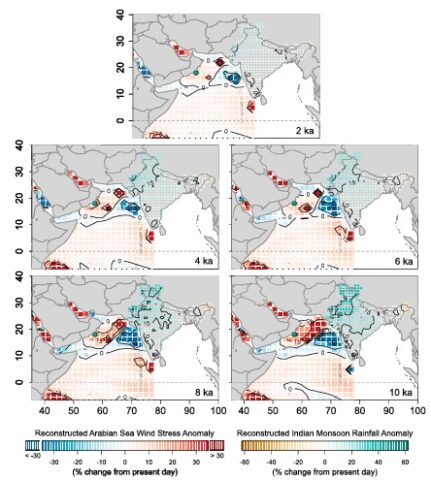After 32 years of existence, the journal Paleoceanography is changing its name. On January 1, 2018, it will become Paleoceanography and Paleoclimatology. This reflects the growth, expansion and evolution of a field of research over the years, and is not a major change of course, nor a break with the journal’s history.

In 1986, Jim Kennett, Paleoceanography’s founding editor, asked for contributions dealing with all aspects of understanding and reconstructing Earth’s past climate, biota and environments, while emphasizing global and regional understanding. At the time, such research papers were based dominantly on the marine sedimentary record, with study materials commonly supplied by scientific ocean drilling.
Since then, the technologies of sampling, sample analysis, data analysis and model development have evolved greatly and rapidly. Articles in Paleoceanography today routinely compare and combine proxy records from ice cores, speleothems, terrestrial sediments and/or lake deposits with multiple stacked proxy records from marine sediment cores, while data are integrated into a broad spectrum of geochemical, earth system, ecosystem and climate models.
The process of recognition of this de-facto expansion in scope of Paleoceanography has taken a few years. It was started in 2014 by then Editor-in-Chief, Chris Charles, who announced in Eos that the journal was expanding to ‘embrace all aspects of global paleoclimatology’. The journal’s name was amended (informally) to “Paleoceanography: An AGU Journal exploring Earth’s Paleoclimate.” New Associate Editors with a broad variety of expertise joined the editorial board.
Finally, after discussions at the 2016 AGU Fall Meeting, the leadership of the AGU Focus Group Paleoceanography & Paleoclimatology, together with the journal editors, organized a survey to gauge the community’s opinion. A large majority (~65%) of the 751 respondents was in favor of a change in the name of the journal.
Inserting the word ‘climate’ into the name allows us to celebrate the growth and evolution of our scientific undertaking. Understanding climates of the past has been an integral part of earth sciences since their early days. Lyell (1830–1833) devoted three chapters in ‘Principles of Geology’ to cyclically changing climates (as shown by fossil distributions), influenced by the position of the continents: the present as key to the past. Chamberlin (1906) wondered how Earth’s climate could have remained sufficiently stable to allow life to persist, ‘without break of continuity’, writing that ‘On the further maintenance of this continuity hang future interests of transcendent moment’. With foresight, he argued that for such continuity to persist ‘a narrow range of atmospheric constitution, notably in the critical element carbon dioxide, has been equally indispensable’.
In our present time of environmental change, it is important to use proxy data on Earth’s past in order to evaluate Earth’s future
In the near future, we may move outside the range of concentrations of atmospheric CO2 as they have been for tens of millions of years, as documented in a number of papers using various proxies, with quite a few of these published in Paleoceanography. We now use, in addition to fossils, a broad and growing range of stable isotope compositions, trace element concentrations and organic biomarkers in fossils and sediments as quantitative proxies for a growing number of environmental properties (e.g., temperature, oxygenation, pH, pCO2).
In our present time of environmental change, it is, more than ever, important to use proxy data on Earth’s past in order to evaluate Earth’s future, thus making our past a key guide to our future.
Paleoceanography has always aimed to publish thorough, innovative studies which add to our understanding of the planet on which we live, and the past variability in its environments over the full range of Earth history. It will continue to do so under its new name. Any paper submitted after July 1, 2017 will be considered under the new title, and all papers accepted after December 1, 2017 will be published under the new title.
—Ellen Thomas, Department of Geology and Geophysics, Yale University; email: [email protected]
Citation:
Thomas, E. (2017), A sea change in paleoceanography, Eos, 98, https://doi.org/10.1029/2018EO073591. Published on 22 May 2017.
Text © 2017. The authors. CC BY-NC-ND 3.0
Except where otherwise noted, images are subject to copyright. Any reuse without express permission from the copyright owner is prohibited.

